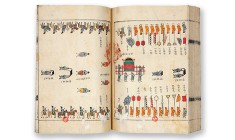Antiquities Trafficking and the Provenance Problem
Yates, D. and Smith, E. (2019) ‘Antiquities trafficking and the provenance problem’, in Milosch, J. and Pearce, N. (eds) Collecting and Provenance: A Multidisciplinary Approach, London: Rowman & Littlefield.
Antiquities are rare, restricted, and in demand. Because the ownership of antiquities is equated in both European and Asian traditions as tangible evidence of a person’s refinement and cultural achievement, collecting of antiquities has evolved into a pursuit by the wealthy and powerful, and an international market has grown to supply collectors with cultural objects. Although antiquities function as commodities within this market, numerous stakeholders resist this commodification of cultural items, as do local, national, and international heritage law and policy. Within a UNESCO-supported discourse of “heritage of all humankind,” antiquities are seen as almost collective cultural property that should not be bought or sold, but rather held in trust for the benefit of everyone. While local policy varies, nearly all countries restrict or ban outright the unprofessional excavation (looting), sale, private ownership, and export of some or all types of antiquities. These policies are not new, and in some countries strong antiquities protection laws have existed for well over a century. With limited exceptions, there are few pathways for collectors to buy fully legal antiquities, and demand far outweighs the supply.
Because of high demand and low supply, the primary vector for antiquities to reach the international market is through looting, trafficking, and illicit sale. Significant research into antiquities sales over the past twenty years have shown the market to be composed almost entirely of antiquities that lack proof of licit origins. Chippindale and Gill, Brodie, Yates, Gilgan, Levine and Martínez de Luna, and others have shown that most antiquities for sale or in private collections are not accompanied by provenance information that clears them of suspicion of having been trafficked.1 Many ancient objects (and for some types of antiquities, most) are sold and bought with no provenance provided whatsoever. As there is no legal pathway for nearly all of these unprovenanced antiquities to reach the market, and as truly legal antiquities almost always come with accompanying provenance documentation, it can be said with no reasonable doubt that all under- and unprovenanced antiquities are illicit in some way, that they have at some point been illegally excavated, exported, or imported. Yet despite this taint of illegality within the market, these objects are openly consumed by elite individuals who do not consider themselves to be criminals.
Available on Rowman & Littlefield website: https://rowman.com/ISBN/9781538127575/Collecting-and-Provenance-A-Multidisciplinary-Approach
